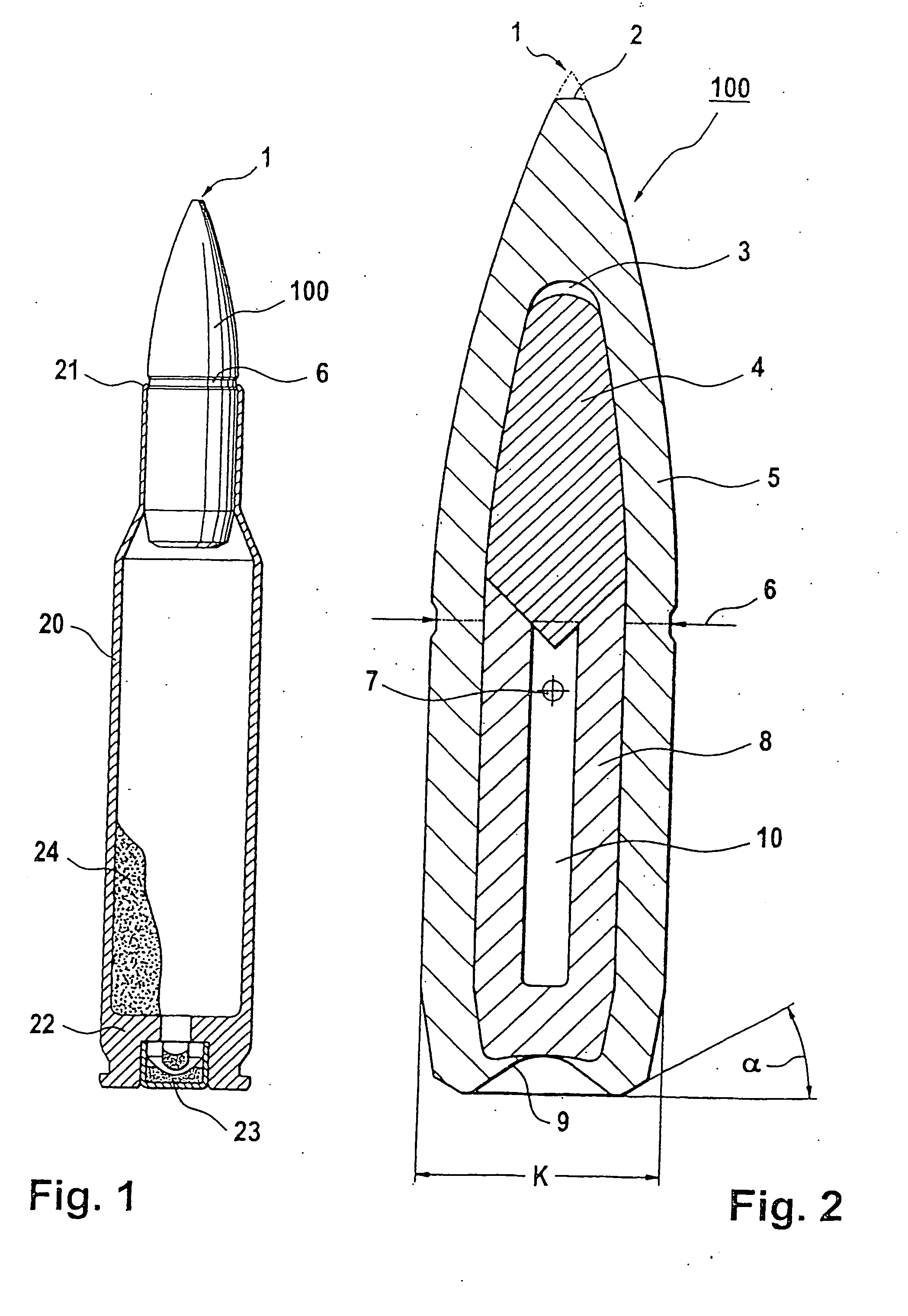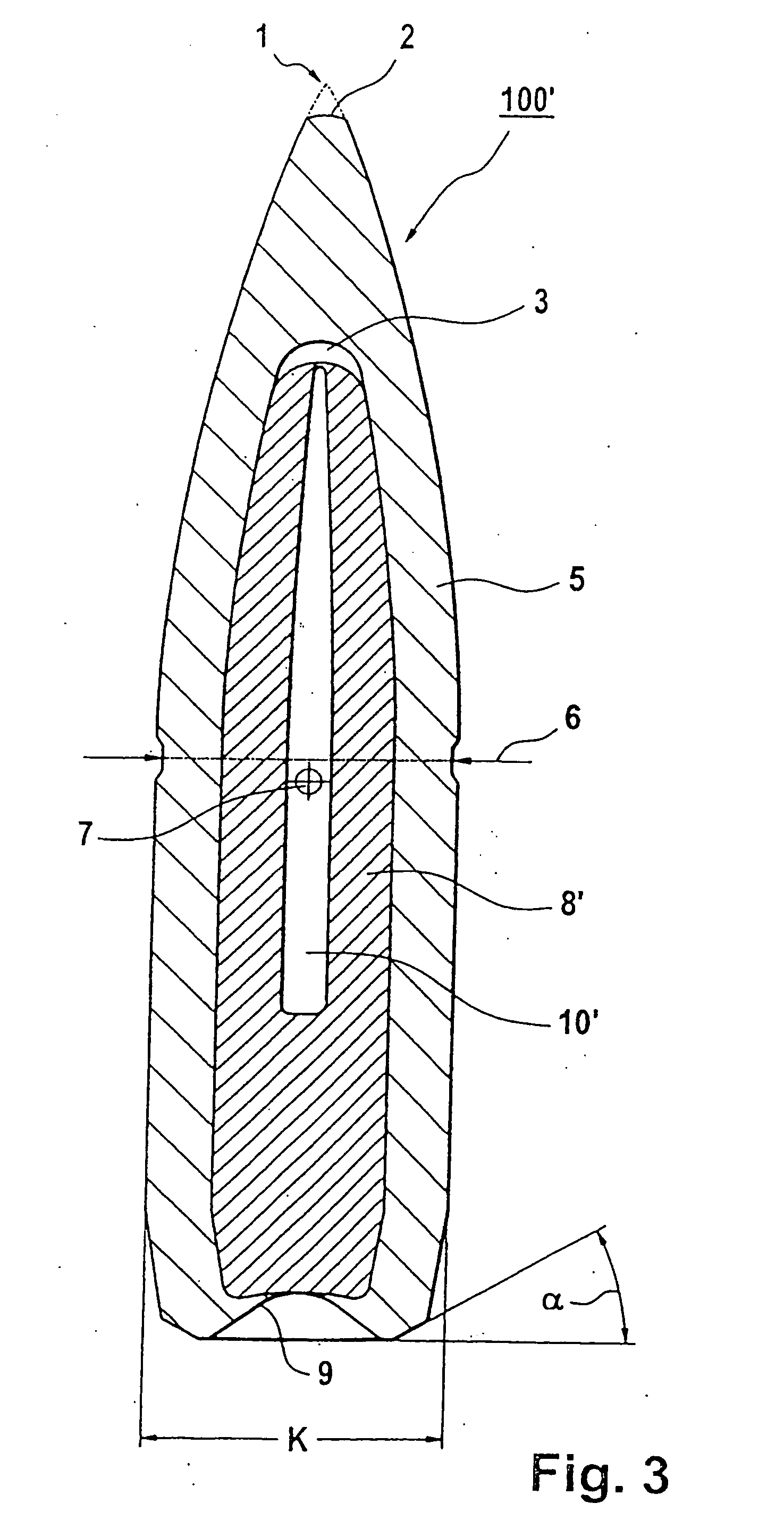Lead-free projectile
a projectile and lead-free technology, applied in the field of lead-free projectiles, can solve the problems of not having the required high final ballistic energy required by marksmen, not having the toxic effect, and still present in the target area of ammunition, so as to reduce ricochets, improve the connection to the cartridge sleeve, and reduce the effect of ricochets
- Summary
- Abstract
- Description
- Claims
- Application Information
AI Technical Summary
Benefits of technology
Problems solved by technology
Method used
Image
Examples
Embodiment Construction
[0028] The tip of a projectile 100 is denoted in FIG. 1 by 1. A flange 21 is inserted into the reduced diameter of a peripheral constriction 6, and which is a component of a cartridge 20 known per se. A standard explosive 24 is located in the cartridge 20, which acts as a propellant for the projectile 100. An impact fuse 23 (SINTOX, trademark of the firm RUAG Ammotec GmbH, Fürth, DE) is inserted in a base 22 of the cartridge 20.
[0029] The preferred rotationally symmetrical projectile 100 is shown in FIG. 2 in an enlarged sectional view.
[0030] The actual tip 1 is imaginary; in reality it is a tip in the shape of a spherical cup 2 formed in the front end of outer jacket 5, the front region of which is ogical or conical. A small air space 3 is located inside the projectile 100, which is formed between a hard core 4 and the outer jacket 5, as a result of the different radii of the front portion of a central hollow space in the jacket and the front of the hard core. A jacket core 8 is ...
PUM
 Login to View More
Login to View More Abstract
Description
Claims
Application Information
 Login to View More
Login to View More - R&D
- Intellectual Property
- Life Sciences
- Materials
- Tech Scout
- Unparalleled Data Quality
- Higher Quality Content
- 60% Fewer Hallucinations
Browse by: Latest US Patents, China's latest patents, Technical Efficacy Thesaurus, Application Domain, Technology Topic, Popular Technical Reports.
© 2025 PatSnap. All rights reserved.Legal|Privacy policy|Modern Slavery Act Transparency Statement|Sitemap|About US| Contact US: help@patsnap.com



